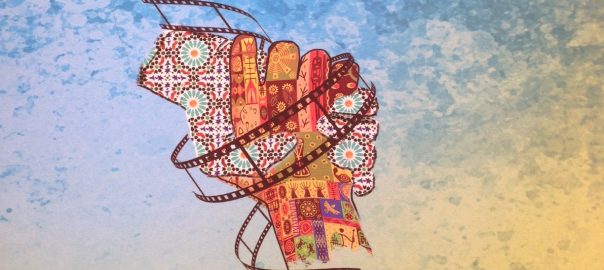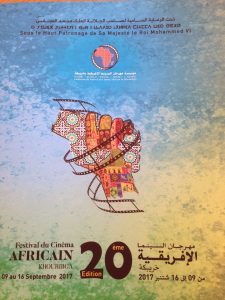The films of the Khouribga International African Film Festival were diverse across nations, cultures, languages, themes, aesthetics, production models… Yet out of 14 films in competition, 3 were clear “African road-movies” – Frontières by Apolline Traoré (Burkina-Faso, 2017), The Train of Salt and Sugar by Licinio Avezedo (Mozambique , 2016) and Hayat by Raouf Sebbahi (Morocco, 2016) – taking the viewers across changing landscapes as they follow the challenging journeys of the protagonists. What is novel here is that the road movie no longer shows the journey of a single protagonist or two trying to either find or lose themselves, but of an entire community sharing one mode of transportation, each group with its own dynamics and finding a form of solidarity by the end of the film.
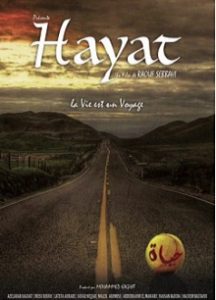
The three films offer three distinct variations on the road movie genre, and feature different modes of public transportation on the African continent (obviously a train in The Train of Salt and Sugar; a bus in Hayat (Life); a string of buses in Frontiers). Each long journey allows for a binary shot/counter shot visual structure providing an intimate look into individual character development on the bus or train as well as sweeping vistas of the outside landscapes and/or nations traversed. The human dimension of each character (framed by inside/outside shots, individual and collective positions, the familiar and the alien, the infinitely small and the infinitely large) is thus constantly highlighted in its progress.
Sebbahi’s use of the bus in Hayat has a whiff of Georges Pérec’s use of the fictitious Parisian building in his novel La Vie mode d’emploi (1978), showing diverse lives parallel to one another, at times bumping into each other in one locus. Yet, the bus moves across the country, and so do its individual characters, from one spatial (at times ethical) initial position to a modified one in the end. Hence, the hypocritical religious character is unmasked for who he really is; a woman becomes a mother on the side of the road; the bus driver becomes a little more patient… here, it is not so much national unity that is stressed as national diversity: every single traveler makes a piece of Moroccan society’s variegated jig-saw puzzle, and everyone moves towards a better comprehension – or at least tolerance – of the other. The film is funny and moving in turn and has an easy-going rhythm. The tone of its well-written script is closer to that of an intimate comedy than to the epic narrative of The Train of Sugar and Salt.
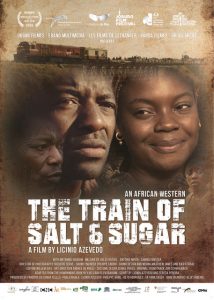
The Train of Salt and Sugar, a beautifully filmed and solidly structured film adapted from a novel published by its director, received awards (best scenario and best director) for its gripping tale of a train traversing Mozambique to Malawi in 1989, during the civil war. Its passengers are ordinary men and women on the one hand, trying to continue to eke out a living trading salt for other goods across the border (sugar is especially precious), and soldiers guarding them on the other, as the guerilla enemy, lurking off screen, repeatedly attacks the convoy. On the train, various individual narratives develop and female characters share at least the same amount of screen as male characters. The army does not appear monochromatic: e.g., a tragic romance develops between an officer and a young freshly graduated nurse; an old hero of mythical proportions knows how to defeat his enemy thanks to his experience and spiritual connection to the jungle the group passes through; another one, the dreaded commandant, abuses the power granted by his rank and rapes women. The train chugs along, stops short of mines and other booby-traps set by the barbarian enemy “out there”. Classically written, it is a polished, historical road-movie that highlights the metaphoric passage from the ugliness of armed conflict to the hope for the future of a reconciled nation, and perhaps, beyond Mozambique, of the entire region. In the end, then, just as in Hayat, individuals grow and become stronger characters. However, the most spectacular transformation is that of the entire community: the army and its citizens now form one group, and the final fixed camera large-angle shot gives a glimpse of both individual and collective future: on the left side of the screen, the female protagonist, Rosa the healing nurse, walks away from the camera towards her future, while on a right parallel track, the train rolls away towards the horizon of a peaceful Mozambique.
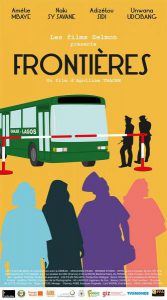
Frontiers by Apolline Traoré, is the film I wish to linger on. This narrative has all the ingredients of an innovative, nourishing film – and, although I was glad it received a prize for the best female second role for the splendid acting of beautiful Naky Sy Savané (revealed in the West for her performance in Fanta Regina Nacro’s La Nuit de la vérité, 2004), I was bitterly disappointed it did not get a prize for best film.
Directed by a formidable woman who also wrote (and rewrote) the script, this film was born from the realization that many women whom you can see on markets in West Africa go to amazing lengths to secure their wares. They traverse borders, bringing bazin material, for instance (hence the hilarious scene of Naky Sy Savané smuggling all of it under an enormous robe, literally doubling in size in the process, prior to crossing the border), and trading for other goods which they bring back to sell on the market at home. The journey is long (it takes weeks on end) and perilous: the soldiers at the borders are corrupt and demand money or sex, and there is no one to defend the women.
Apolline Traoré wanted to make sure these sellers knew their rights in the age of free circulation of goods and people in West Africa. The bureaucrats (the police, the army, the customs officers, all of them male…) take advantage of illiterate women. Traoré uses film here as an education tool to empower these brave women who cross all sorts of frontiers: national, cultural, traditional, gendered and more.

In the meantime, Traoré educates her viewers beyond the market women she wishes to address in the first row, with subtlety and great verve. Her narrative is funny, touching, and each individual character brings a lot to the understanding of the range of travelers (in age, condition, national origin, humanity) and destinies at stake on the bus. The film slices through class and gender with a wonderful economy of images and dialogues: Traoré’s rhythm is steady, her camerawork beautiful, her script rings very true. Her variation on the road movie offers an original perspective on evolving individual characters as well as on a beautifully imaged, intensely moving, pan-African, female solidarity across borders. Traoré got my prize!
Florence Martin

